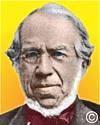
On 24 Jun 1788, Thomas Blanchard was born, an American inventor who made major contributions to the development of machine tools and invented a number of machines including the famous lathe that bears his name. At age 13, he developed an apple-paring machine, and later he devised a machine to mass-produce tacks without the tedious handwork of heading the tack.
This article from A History of American Manufactures from 1608 to 1860 (1866) gives some more information on his inventiveness.

On 24 Jun 1915, Fred Hoyle was born, an English mathematician and astronomer, who coined the term "Big Bang" as a derisive reference to the theory in which he did not believe. He supported a different theory for the origins of the universe. Today's book pick is: A Different Approach to Cosmology: From a Static Universe through the Big Bang towards Reality, by F. Hoyle, G. Burbidge, J. V. Narlikar. They present the best-developed alternative theory to the “Big Bang,” with scientific arguments written to be accessible to upper-division undergraduate students in physics and astrophysics. According to Physics Today, “This is a fascinating book, expressing the views of three scientists who choose to go against the conventional cosmological wisdom. It is extremely important for such skepticism to exist and for such books to be written.”
It is available from Amazon, typically about New from $133.87. Used from $20.31. (As of earlier time of writing - subject to change.)
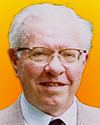 | It is often held that scientific hypotheses are constructed, and are to be constructed, only after a detailed weighing of all possible evidence bearing on the matter, and that then and only then may one consider, and still only tentatively, any hypotheses. This traditional view however, is largely incorrect, for not only is it absurdly impossible of application, but it is contradicted by the history of the development of any scientific theory. What happens in practice is that by intuitive insight, or other inexplicable inspiration, the theorist decides that certain features seem to him more important than others and capable of explanation by certain hypotheses. Then basing his study on these hypotheses the attempt is made to deduce their consequences. The successful pioneer of theoretical science is he whose intuitions yield hypotheses on which satisfactory theories can be built, and conversely for the unsuccessful (as judged from a purely scientific standpoint). |
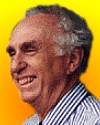 | My final remark to young women and men going into experimental science is that they should pay little attention to the speculative physics ideas of my generation. After all, if my generation has any really good speculative ideas, we will be carrying these ideas out ourselves. |
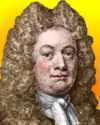 | He who cures a disease may be the skillfullest, but he who prevents it is the safest physician. |
| Before you look at today's web page, see if you can answer some of these questions about the events that happened on this day. Some of the names are very familiar. Others will likely stump you. Tickle your curiosity with these questions, then check your answers on today's web page. | |
| Births | |
 | Martin Lewis Perl, born 24 Jun 1927, won the 1995 Nobel Prize for Physics for discovering a subatomic particle (in the mid-1970s) which was a massive lepton with a negative charge, the first evidence of a third “generation” of fundamental particles. What did he name this particle? |
 | On 24 Jun 1915, Sir Fred Hoyle was born, an English mathematician and astronomer. He became Britain’s best-known astronomer in 1950 with his broadcast lectures on The Nature of the Universe, and he recalled coining the term “Big Bang” in the last of those talks. Even so, Hoyle never accepted the now most popular “Big Bang” theory for the origin of the universe. What theory for the universe did Hoyle promote? |
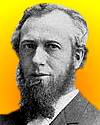 | On 24 Jun 1839, Gustavus Swift was born, who was a partner in a Chicago meat company when he invented a way to handle the supply of beef from western states to Chicago. His method made it no longer necessary to keep the animals alive for slaughter in Chicago. It was so successful he formed Swift and Company with his brother. He also pioneered products such as glue, soap and margarine to profit from animal parts previously discarded. His alliances with J.O. Armour and Edward Morris formed such a monopoly that the “Beef Trust” was broken up by the Supreme Court in 1905. What was the invention with which he revolutionized the handling of the beef supply to Chicago from western states? |
| Deaths | |
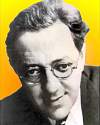 | Willy Ley (1906-1969) was a German-American engineer who was a founder of the German Rocket Society. The society was the first group of men (with the sole exception of Robert Goddard) to experiment with rockets. Ley was consultant for the science fiction film Frau im Mond in which the countdown from ten to zero was introduced. Fiercely anti-Nazi, in 1934, he emigrated to the U.S. rather than pursuing military applications of rocketry. In the U.S., he became a popularizer of space exploration and travel, writing many popular books. Can you name the man Lay introduced to the society who is the best known German to conduct rocket experiments during World War II? |
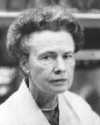 | Hattie Elizabeth Alexander died on 24 Jun 1968. She was an American who did groundbreaking work in her field, publishing some 70 papers over a period of 30 years. Can you name the profession in which this lady made significant advances, and what they were? |
| Events | |
 | In 1873, a well-known American author received a U.S. patent for a self-pasting Scrapbook (No. 140245). His invention was to coat the pages of the scrapbook with mucilage or adhesive. He suggested two forms. In one form, the pages would be coated within patches of adhesive with intervals of untreated paper between them. The second form was to coat the entire page. In either case, only sufficient area of the leaf is moistened that is necessary to hold the piece that is to be pasted in. Can you name this inventor and his author pen-name? |
 | On 24 Jun of a certain year, a home video recorder was first demonstrated at the BBC News Studios in London. The Telcan machine was a fixed-head longitudinal videotape recorder intended for home-taping of television programmes. The open-reel recorder mounted on top of a television cabinet used quarter-inch tape running at 120 inches per second speed. Telcan failed before it ever went on sale. In what decade did this demonstration take place? |
 | In 1975, a moon tremor was detected by the seismometer network left on the Moon’s surface by American astronauts. What was the cause of this tremor? |
Fast answers for the previous newsletter for June 23: 100,000 years • plane polarized • Jonas Edward Salk • -117 °F (-82.8 °C) • the decade including the year 1964.
 If you enjoy this newsletter, the website, or wish to offer encouragement or ideas, please send feedback by using your mail reader Reply button.
If you enjoy this newsletter, the website, or wish to offer encouragement or ideas, please send feedback by using your mail reader Reply button. Your click on a Facebook, StumbleUpon, or other social button on the site webpages is also a welcome sign of appreciation. Thank you for using them.
© This newsletter is copyright 2020 by todayinsci.com. Please respect the Webmaster's wishes and do not put copies online of the Newsletter — or any Today in Science History webpage. (If you already have done so, please remove them. Thank you.) Offline use in education is encouraged such as a printout on a bulletin board, or projected for classroom viewing. Online, descriptive links to our pages are welcomed, as these will provide a reader with the most recent revisions, additions and/or corrections of a webpage. For any other copyright questions, please contact the Webmaster by using your mail reader Reply button.
--
If you do not want to receive any more newsletters, Unsubscribe
To update your preferences and to unsubscribe visit this link
Executive Real Estate Business Class
-
"It was like a man with wings. It wasn't like anything you'd see on TV or in a monster movie." ...
About the publisher
Search This Blog
Blog Archive
-
▼
2020
(1542)
-
▼
June
(193)
- TRAVEL: Epic America—Our photographers' picks
- On This Day for June 30 - Night of the Long Knives...
- Newsletter for Tuesday 30 June.
- We told you: Mass-Tracking COVI-PASS Immunity Pass...
- June 30: Theory of Evolution, the Night of Long Kn...
- HISTORY: And the symbols come tumbling down
- Explore the Ocean with Nat Geo Kids Magazine
- New This Week on History News Network
- On This Day for June 29 - London's Globe Theatre d...
- Newsletter for Monday 29 June.
- COVID Cartoon Night (not funny) while we weep for ...
- June 29: Shakespeare's Globe Theatre Burns Down an...
- FAMILY: Getting your kid to help others
- Henry VIII's surprising burial place | The world's...
- On This Day for June 28 - Assassination of Archduk...
- Say the wrong thing: lose visitation with your kid...
- Newsletter for Sunday 28 June.
- June 28: Franz Ferdinand Assassinated, the Treaty ...
- The Compass: Kenya
- How the Invention of A/C Changed US Politics
- On This Day for June 27 - Yen made official moneta...
- Newsletter for Saturday 27 June.
- June 27: 1st Women's Magazine, Nuclear Power Stati...
- CORONAVIRUS SPECIAL EDITION: The virus hasn't won ...
- PHOTOGRAPHY: A legendary photographer's enduring r...
- Partner: How to keep your kids learning vocab this...
- Archaeologists Say They've Just Solved The 400-Yea...
- The Roundup Top Ten From History News Network
- On This Day for June 26 - Opening of CN Tower, Bab...
- Newsletter for Friday 26 June.
- Contact Tracer warns of forced vaccinations plus R...
- June 26: Reconnaissance balloons, Kennedy's Clario...
- YOUR WEEKLY ESCAPE: A dangerous quest for hallucin...
- That Was No Bunny: Watch New Episode of Alone Tonight
- ANIMALS: Leave that elephant alone
- On This Day for June 25 - Korean War begun, Antoni...
- Newsletter for Thursday 25 June.
- June 25: 1st Female PhD, Custer's Last Stand, the ...
- SCIENCE: The heat wave in the Arctic
- Demystified: What Does "SPF" Mean?
- On This Day for June 24 - Russia invaded by Napole...
- Breaking News from History News Network
- Newsletter for Wednesday 24 June.
- June 24: Fatal Medieval Dance Manias, the Gadsden ...
- TRAVEL: Fear of flying and hotel rooms fuels RV boom
- Be at the Front Lines of History's Most Epic Battl...
- On This Day for June 23 - Battle of Bannockburn, C...
- Lowest US coronavirus deaths reported since March ...
- Newsletter for Tuesday 23 June.
- June 23: World's Oldest Parliament, the Contracept...
- Life Under The Shah: What Iran Looked Like Before ...
- HISTORY: A swift goodbye to some racist imagery (a...
- A whole year of Britannica Premium for $49.99?
- New This Week on History News Network
- On This Day for June 22 - Mutiny against Henry Hud...
- Newsletter for Monday 22 June.
- Clintons and Gates Connected at the Hip plus Cardi...
- June 22: Galileo Galilei Recants, Last Shot of the...
- FAMILY: How to keep kids safe as places reopen
- On This Day for June 21 - Japanese defenses destro...
- Newsletter for Sunday 21 June.
- June 21: 1st Governor General of India, Fermat's L...
- The Compass: Ecuador
- On This Day for June 20 - Casket Letters found, Ho...
- Newsletter for Saturday 20 June.
- CORONAVIRUS SPECIAL EDITION: Could public bathroom...
- Mandatory Vaccines coming: Bill Gates Accuses Tho...
- June 20: Attila the Hun, the University of Oxford ...
- PHOTOGRAPHY: Fatherhood 2020 — ‘Fear and courage a...
- Why is America haunted by its past?
- The Woman Who Claimed Emmett Till Wolf-Whistled At...
- This Week's Roundup Top Ten from History News Network
- Exclusive HistoryExtra podcasts | Listen now
- On This Day for June 19 - Rosenbergs executed for ...
- Newsletter for Friday 19 June.
- World Economic Forum starts The Great Reset initia...
- YOUR WEEKLY ESCAPE: How the ultimate shark photo w...
- June 19: London's Metropolitan Police and the 1st ...
- Predator Encounters. Watch New Episode of Alone To...
- ANIMALS: Finding the snow leopards
- Count on a Source You Can Trust
- On This Day for June 18 - War of 1812 begun, Sir P...
- Newsletter for Thursday 18 June.
- Lockdowns, tracing, testing, vaccinating, and Libe...
- June 18: US-British War of 1812, the Battle of Wat...
- SCIENCE: They grew fearsome. They began soft, and ...
- Demystified: How Are Sports Chosen for the Olympics?
- Breaking News from History News Network
- On This Day for June 17 - Arrest of O.J. Simpson, ...
- Newsletter for Wednesday 17 June.
- June 17: Mumtaz Mahal, the French Revolution and G...
- TRAVEL: They hurtled the world's highest point
- Explore together with Nat Geo Kids magazine
- On This Day for June 16 - First woman in space, Jo...
- Newsletter for Tuesday 16 June.
- June 16: Salvation Army Forms, Bloomsday and FDR's...
- HISTORY: Why we can’t shake COVID-19
- New This Week on History News Network
- On This Day for June 15 - Magna Carta sealed by Ki...
- Yes, they really are forcing changes to your world...
-
▼
June
(193)
-
Blogroll
-
About
HistoryFact










0 comments:
Post a Comment